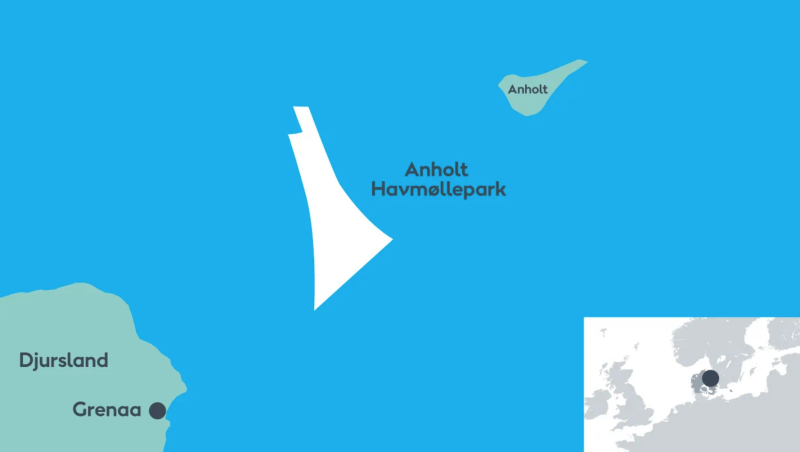Wind power company Ørsted asked maritime authorities to declare ‘no-sail zones’ around eight of its European offshore wind projects after a rotor assembly separated and fell into the sea at one site off Denmark.
The failure happened at the Anholt Offshore Wind Farm, and involved a Siemens-Gamesa turbine with nameplate capacity of 3.6-4 MW. The 400 MW-rated Anholt array was commissioned in 2013 and consists of 111 of those Siemens-Gamesa machines.
There were no injuries in the incident which was reported to authorities, according to a statement from Ørsted.
“We are investigating the cause of the incident, and as an extraordinary precautionary measure, we are requesting the relevant authorities to establish ‘no-sail zones’ at all of our offshore wind farms that use the same turbine as at Anholt,” the company said. “So far, the investigation has not pointed to a systemic cause of the issue, but we have taken this precautionary step as safety is our first priority. The assets continue to operate as normal with the relevant safety protocols, and customers in the relevant markets will not be affected.”

The company asked maritime authorities in the United Kingdom, Denmark and Germany to keep vessels clear of eight other turbine arrays in their waters: West of Duddon Sands, Lincs, Gunfleet Sands, Burbo Bank and Walney 1 & 2, all in the UK; Borkum Riffgrund 1 in Germany; and Avedøre Holme in Denmark.
“At the offshore wind farm of Anholt in Denmark, which is under service with Ørsted, a rotor was detached from one of the turbines,” according to a statement from Siemens Gamesa. “The reason for this is still unknown, but Siemens Gamesa is working together with Ørsted to determine the root cause and decide on next steps.”
Situated in the Kattegat strait between Denmark and Sweden, Anholt is 50 percent owned by Ørsted along with Danish pension fund partners Pension Danmark with 30 percent and PKA holding 20 percent.
The Siemens Gamesa turbines were state of the art in earlier years of offshore wind development but will be far overtaken by the oncoming generation of more powerful designs. Siemens Gamesa and GE will build new models with nameplate capacity of 14 MW.







